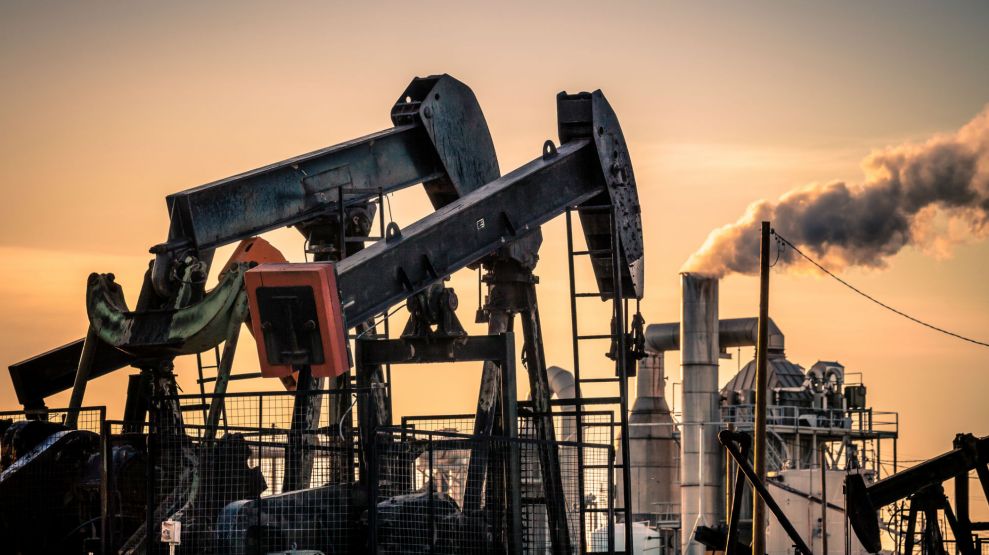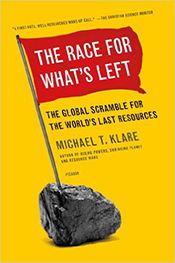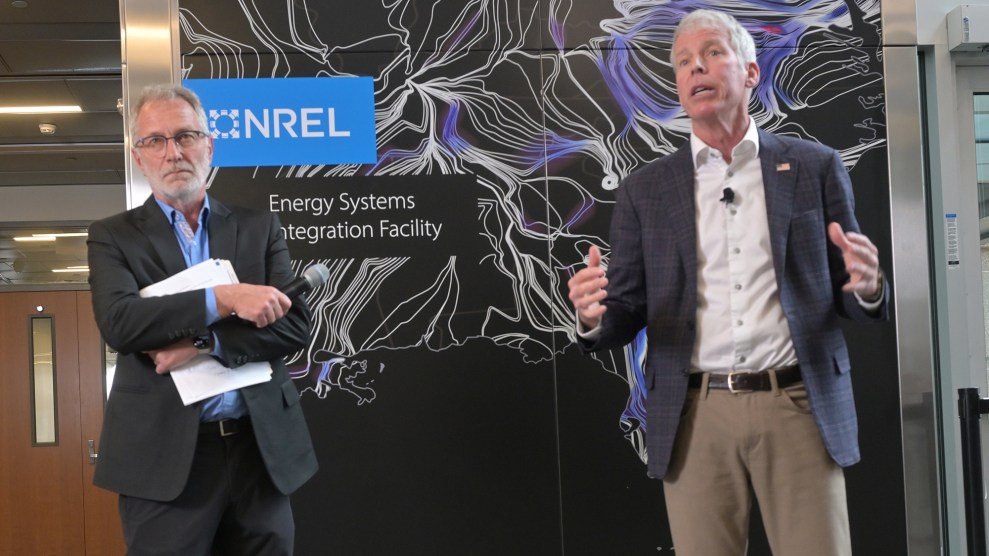
GaryKavanagh/iStock
This story first appeared on the TomDispatch website.
Scroll through Donald Trump’s campaign promises or listen to his speeches and you could easily conclude that his energy policy consists of little more than a wish list drawn up by the major fossil fuel companies: lift environmental restrictions on oil and natural gas extraction, build the Keystone XL and Dakota Access pipelines, open more federal lands to drilling, withdraw from the Paris climate agreement, kill Obama’s Clean Power Plan, revive the coal mining industry, and so on and so forth ad infinitum. In fact, many of his proposals have simply been lifted straight from the talking points of top energy industry officials and their lavishly financed allies in Congress.
If, however, you take a closer look at this morass of pro-carbon proposals, an obvious, if as yet unnoted, contradiction quickly becomes apparent. Were all Trump’s policies to be enacted—and the appointment of the climate-change denier and industry-friendly attorney general of Oklahoma, Scott Pruitt, to head the Environmental Protection Agency suggests the attempt will be made—not all segments of the energy industry will flourish. Instead, many fossil fuel companies will be annihilated, thanks to the rock-bottom fuel prices produced by a colossal oversupply of oil, coal, and natural gas.
Indeed, stop thinking of Trump’s energy policy as primarily aimed at helping the fossil fuel companies (although some will surely benefit). Think of it instead as a nostalgic compulsion aimed at restoring a long-vanished America in which coal plants, steel mills, and gas-guzzling automobiles were the designated indicators of progress, while concern over pollution—let alone climate change—was yet to be an issue.
If you want confirmation that such a devastating version of nostalgia makes up the heart and soul of Trump’s energy agenda, don’t focus on his specific proposals or any particular combination of them. Look instead at his choice of ExxonMobil CEO Rex Tillerson as his secretary of state and former Gov. Rick Perry from oil-soaked Texas as his secretary of energy, not to mention the carbon-embracing fervor that ran through his campaign statements and positions. According to his election campaign website, his top priority will be to “unleash America’s $50 trillion in untapped shale, oil, and natural gas reserves, plus hundreds of years in clean coal reserves.” In doing so, it affirmed, Trump would “open onshore and offshore leasing on federal lands, eliminate [the] moratorium on coal leasing, and open shale energy deposits.” In the process, any rule or regulation that stands in the way of exploiting these reserves will be obliterated.
If all of Trump’s proposals are enacted, US greenhouse gas emissions will soar, wiping out the declines of recent years and significantly increasing the pace of global warming. Given that other major GHG emitters, especially India and China, will feel less obliged to abide by their Paris commitments if the US heads down that path, it’s almost certain that atmospheric warming will soar beyond the 2 degree Celsius rise over pre-industrial levels that scientists consider the maximum the planet can absorb without suffering catastrophic repercussions. And if, as promised, Trump also repeals a whole raft of environmental regulations and essentially dismantles the Environmental Protection Agency, much of the progress made over recent years in improving our air and water quality will simply be wiped away, and the skies over our cities and suburbs will once again turn gray with smog and toxic pollutants of all sorts.
To fully appreciate the dark, essentially delusional nature of Trump’s energy nostalgia, let’s start by reviewing his proposals. Aside from assorted tweets and one-liners, two speeches before energy groups represent the most elaborate expression of his views: The first was given on May 26 at the Williston Basin Petroleum Conference in Bismarck, North Dakota, to groups largely focused on extracting oil from shale through hydraulic fracturing (“fracking”) in the Bakken shale oil formation. The second, on September 22, addressed the Marcellus Shale Coalition in Pittsburgh, a group of Pennsylvania gas frackers.
At both events, Trump’s comments were designed to curry favor with this segment of the industry by promising the repeal of any regulations that stood in the way of accelerated drilling. But that was just a start for the then-candidate. He went on to lay out an “America-first energy plan” designed to eliminate virtually every impediment to the exploitation of oil, gas, and coal anywhere in the country or in its surrounding waters, ensuring America’s abiding status as the world’s leading producer of fossil fuels.
Much of this, Trump promised in Bismarck, would be set in motion in the first 100 days of his presidency. Among other steps, he pledged to:
- Cancel America’s commitment to the Paris Climate Agreement and stop all payments of US tax dollars to UN climate programs
- Lift any existing moratoriums on energy production in federal areas
- Ask TransCanada to renew its permit application to build the Keystone XL Pipeline
- Revoke policies that impose “unwarranted” restrictions on new drilling technologies
- Save the coal industry
?The specifics of how all this might happen were not provided either by the candidate or, later, by his transition team. Nevertheless, the main thrust of his approach couldn’t be clearer: abolish all regulations and presidential directives that stand in the way of unrestrained fossil fuel extraction, including commitments made by President Obama in December 2015 under the Paris agreement. These would include, in particular, the EPA’s Clean Power Plan, with its promise to substantially reduce greenhouse gas emissions from coal-fired plants, along with mandated improvements in automotive fuel efficiency standards that would require major manufacturers to achieve an average of 54.5 miles per gallon in all new cars by 2025. As these constitute the heart of America’s “intended nationally determined contributions” to the 2015 accord, they will undoubtedly be early targets for a Trump presidency and will represent a functional withdrawal from the Paris Agreement, even if an actual withdrawal isn’t instantly possible.
?Just how quickly Trump will move on such promises, and with what degree of success, cannot be foreseen. However, because so many of the measures adopted by the Obama administration to address climate change were enacted as presidential directives or rules promulgated by the EPA—a strategy adopted to circumvent opposition from climate skeptics in the Republican-controlled House and Senate—Trump will be in a position to impose a number of his own priorities simply by issuing executive orders that nullify Obama’s. Some of his goals will, however, be far harder to achieve. In particular, it will prove difficult indeed to “save” the coal industry if America’s electrical utilities retain their preference for cheap natural gas.
This last point speaks to a major contradiction in the Trump energy plan. Seeking to boost the extraction of every carbon-based energy source inevitably spells doom for segments of the industry incapable of competing in the low-price environment of a supply dominated Trumpian energy marketplace.
Take the competition between coal and natural gas in powering America’s electrical plants. As a result of the widespread deployment of fracking technology in the nation’s prolific shale fields, the US natural gas output has skyrocketed, jumping from 18.1 trillion cubic feet in 2005 to 27.1 trillion in 2015. With so much new gas on the market, prices have naturally declined—a boon for the utilities, which have converted many of their plants from coal to gas-combustion in order to benefit from the low prices. This, more than anything else, is responsible for the decline of coal use, with total consumption dropping by 10 percent in 2015 alone.
In his speech to the Marcellus Coalition, Trump promised to facilitate the expanded output of both fuels. In particular, he pledged to eliminate federal regulations that, he claimed, “remain a major restriction to shale production.” (Presumably, this was a reference to Obama administration measures aimed at reducing the excessive leakage of methane, a major greenhouse gas, from fracking operations on federal lands.) At the same time, he vowed to “end the war on coal and the war on miners.”
As Trump imagines the situation, that “war on coal” is a White House-orchestrated drive to suppress its production and consumption through excessive regulation, especially the Clean Power Plan. But while that plan, if ever fully put into operation, would result in the accelerated decommissioning of existing coal plants, the real war against coal is being conducted by the very frackers Trump seeks to unleash. By encouraging the unrestrained production of natural gas, he will ensure a depressed market for coal.
A similar contradiction lies at the heart of Trump’s approach to oil: Rather than seeking to bolster core segments of the industry, he favors a supersaturated market approach that will end up hurting many domestic producers. Right now, the single biggest impediment to oil company growth and profitability are the low prices brought on by a global glut of crude—itself largely a consequence of the explosion of shale oil production in the United States. With more petroleum entering the market and insufficient world demand to soak it up, prices have remained low for more than two years, severely affecting fracking operations as well. Many US frackers, including some in the Bakken formation, have been forced to suspend operations or declare bankruptcy because each new barrel of fracked oil costs more to produce than it can be sold for.
Trump’s approach—pump out as much oil as possible here and in Canada—is potentially disastrous, even in energy industry terms. He has, for instance, threatened to open up yet more federal lands, onshore and off, for yet more oil drilling, presumably including areas previously protected on environmental grounds, such as the Arctic National Wildlife Refuge and the seabeds off the Atlantic and Pacific coasts. In addition, the construction of pipelines like the embattled one in North Dakota, and other infrastructure needed to bring these added resources to market, will clearly be approved and facilitated.
In theory, this drown-us-in-oil approach should help achieve a much-trumpeted energy “independence” for the United States, but under the circumstances, it will surely prove a calamity of the first order. And Trump’s fantasy version of a future energy market will only grow more tumultuous thanks to his urge to help ensure the survival of that particularly carbon-dirty form of oil production, Canada’s tar sands industry.
Not surprisingly, that industry, too, is under enormous pressure from low oil prices, as tar sands are far more costly to produce than conventional oil. At the moment, adequate pipeline capacity is also lacking for the delivery of their thick, carbon-heavy crude to refineries on the American Gulf Coast where they can be processed into gasoline and other commercial products. So here’s yet one more Trumpian irony: By favoring construction of the Keystone XL pipeline, he would throw yet another monkey wrench into his own planning. Sending a life preserver to the Canadian industry—allowing it to better compete with American crude—would be another strike against Trump’s “America-first energy plan.”
In other words, Trump’s plan will undoubtedly prove to be an enigma wrapped in a conundrum inside a roiling set of contradictions. Although it appears to offer boom times for every segment of the fossil fuel industry, only Big Carbon as a whole will benefit, while many individual companies and market sectors will suffer. What could possibly be the motivation for such a bizarre and planet-enflaming outcome?
To some degree, no doubt, it comes from the president-elect’s deep and abiding nostalgia for the fast-growing (and largely regulation-free) America of the 1950s. When Trump was growing up, the United States was on an extraordinary expansionist drive and its output of basic goods, including oil, coal, and steel, was swelling by the day. The major industries were heavily unionized; the suburbs were booming; apartment buildings were going up all over the borough of Queens in New York City where Trump got his start; cars were rolling off the assembly lines in what was then anything but the “Rust Belt”; and refineries and coal plants were pouring out the massive amounts of energy needed to make it all happen.

Having grown up in the Bronx, just across Long Island Sound from Trump’s home borough, I can still remember the New York of that era: giant smokestacks belching out thick smoke on every horizon and highways jammed with cars adding to the miasma—but also to that sense of explosive growth. Builders and manufacturers didn’t have to seriously worry about regulations back then, and certainly not about environmental ones, which made life—for them—so much simpler.
It’s that carbon-drenched era to which Trump dreams of returning, even if it’s already clear enough that the only conceivable kind of dream that can ever come from his set of policies will be a nightmare of the first order, with temperatures exceeding all records, coastal cities regularly under water, our forests in flame and our farmlands turned to dust.
And don’t forget one other factor: Trump’s vindictiveness—in this case, not just toward his Democratic opponent in the recent election campaign but toward those who voted against him. The Donald is well aware that most Americans who care about climate change and are in favor of a rapid transformation to a green energy America did not vote for him, including prominent figures in Hollywood and Silicon Valley who contributed lavishly to Hillary Clinton’s coffers on the promise that the country would be transformed into a “clean energy superpower.”
Given his well-known penchant for attacking anyone who frustrates his ambitions or speaks negatively of him, and his urge to punish greens by, among other things, obliterating every measure adopted by President Obama to speed the utilization of renewable energy, expect him to rip the EPA apart and do his best to shred any obstacles to fossil fuel exploitation. If that means hastening the incineration of the planet, so be it. He either doesn’t care (since at 70 he won’t live to see it happen), truly doesn’t believe in the science, or doesn’t think it will hurt his company’s business interests over the next few decades.
One other factor has to be added into this witch’s brew: magical thinking. Like so many leaders of recent times, he seems to equate mastery over oil in particular, and fossil fuels in general, with mastery over the world. In this, he shares a common outlook with President Vladimir Putin of Russia, who wrote his PhD dissertation on harnessing Russia’s oil and gas reserves in order to restore the country’s global power, and with Tillerson, Trump’s pick for secretary of state and a long-term business partner of the Putin regime. For these and other politicians and tycoons—and, of course, we’re talking almost exclusively about men here—the possession of giant oil reserves is thought to bestow a kind of manly vigor. Think of it as the national equivalent of Viagra.
Back in 2002, Robert Ebel of the Center for Strategic and International Studies put the matter succinctly: “Oil fuels more than automobiles and airplanes. Oil fuels military power, national treasuries, and international politics…[It is] a determinant of well being, national security, and international power for those who possess [it] and the converse for those who do not.”
Trump seems to have fully absorbed this line of thinking. “American energy dominance will be declared a strategic economic and foreign policy goal of the United States,” he declared at the Williston forum in May. “We will become, and stay, totally independent of any need to import energy from the OPEC cartel or any nations hostile to our interests.” He seems firmly convinced that the accelerated extraction of oil and other carbon-based fuels will “make America great again.”
?This is delusional, but as president he will undoubtedly be able to make enough of his energy program happen to achieve both short-term and long-term energy mayhem. He won’t actually be able to reverse the global shift to renewable energy now under way, or leverage increased American fossil-fuel production to achieve significant foreign policy advantages. What his efforts are, however, likely to ensure is the surrender of American technological leadership in green energy to countries like China and Germany, already racing ahead in the development of renewable systems. And in the process, he will also guarantee that all of us are going to experience yet more extreme climate events. He will never re-create the dreamy America of his memory or return us to the steamy economic cauldron of the post-World War II period, but he may succeed in restoring the smoggy skies and poisoned rivers that so characterized that era and, as an added bonus, bring planetary climate disaster in his wake. His slogan should be: Make America Smoggy Again.
Michael T. Klare is a professor of peace and world security studies at Hampshire College and the author, most recently, of The Race for What’s Left. A documentary movie version of his book Blood and Oil is available from the Media Education Foundation.
















